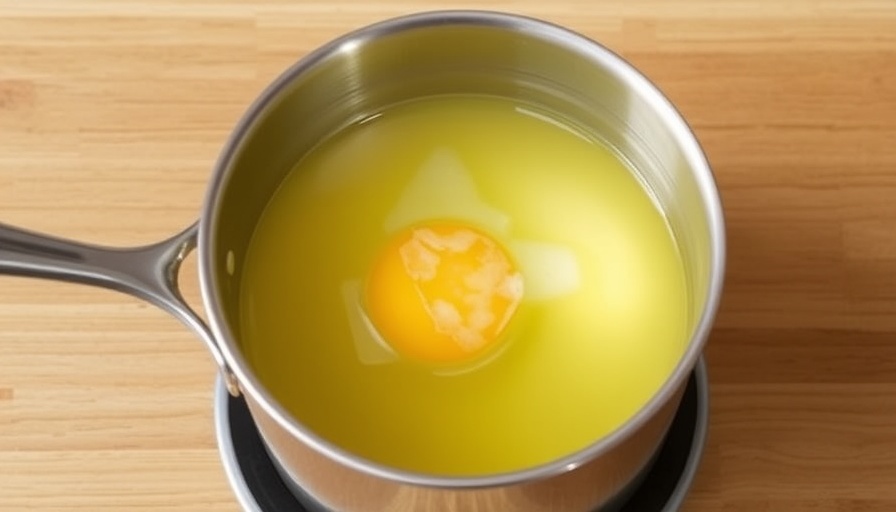
The Science Behind Perfectly Boiled Eggs
Boiling an egg seems like a simple task, yet many find it challenging to achieve the perfect consistency where both the yolk and the egg white are cooked to perfection. A recent study published in the journal Communications Engineering introduces a fascinating method known as "periodic cooking." This technique not only promises evenly cooked eggs but may also enhance their nutritional value.
Understanding Periodic Cooking
The periodic cooking method combines two temperature extremes: immersing the egg in boiling water at 100 degrees Celsius (212 degrees Fahrenheit) and then transferring it to a bowl maintained at a much cooler 30 degrees Celsius (86 degrees Fahrenheit). This dance between temperatures occurs every two minutes over 32 minutes, creating a sumptuous result. Researcher Emilia Di Lorenzo explains that the outcome is a soft yolk with a texture akin to that of a sous vide egg, making it ideal for spreading.
Nutritional Benefits: More than Just Taste
Not only does this technique yield exquisite taste, but it also boosts the nutritional content of the egg. Chemical analysis reveals that periodically cooked eggs contain higher levels of beneficial micronutrients, such as polyphenols, and better preserve essential amino acids. This aspect is crucial for those who pay attention to their dietary habits and are keen on maximizing the nutritional value of their meals.
Practical Considerations for Busy Individuals
Despite the promising results of periodic cooking, some may question its practicality. Registered dietitian Micah Siva notes that while science plays a critical role in cooking, the complexity of this method might not align with the needs of those with busy lives. Most individuals often seek quicker and simpler meal preparations. So, is this method worth it? For some, the result may justify the time; for others, it may remain an interesting scientific insight without practical application.
Making Cooking Easier in a Busy Life
For those who struggle with meal prep or time allocation for cooking, finding easier solutions that still satisfy both taste and health is essential. One suggestion is to apply what is learned about the relationship between temperature and cooking to more straightforward methods, allowing one to replicate similar results without the meticulous back-and-forth. This approach can save time while still yielding delicious and nutritious meals.
Rethinking Homemade Meals and Financial Wellness
Cooking at home not only has culinary benefits but can also contribute positively to one’s financial wellness. By mastering simple and healthy cooking techniques, one can save money otherwise spent on dining out. This aspect echoes the broader theme of financial health—making wise choices in meal preparation ties into budgeting and expense tracking, ultimately leading in the right direction for achieving one’s financial goals.
Encouraging a Balanced Lifestyle
Embracing both cooking science and smart financial planning can lead to a fulfilling life. Start with basic dishes and gradually incorporate more complex strategies, making the process enjoyable. Sharing meals with friends or family fosters connections that are enriching both at the dinner table and in life’s journey.
As we navigate our daily responsibilities, remember that trying new recipes and cooking methods can be a delightful experience. Whether you’re a novice in the kitchen or a seasoned home chef, approaching your cooking with an itinerary of excitement, warmth, and purpose can translate into greater overall wellness.
Take Action: Embrace Cooking Science Today!
Dive into the joys of cooking by experimenting with the periodic cooking method or adapting simpler techniques that enhance your culinary repertoire. Not only will you enjoy delicious meals, but you will also feel empowered to take control of your finances by cooking at home more often. By learning and engaging in new cooking methods, you pave the way toward a healthier, happier life.
 Add Row
Add Row  Add
Add 




 Add Row
Add Row 


 Add
Add
Write A Comment